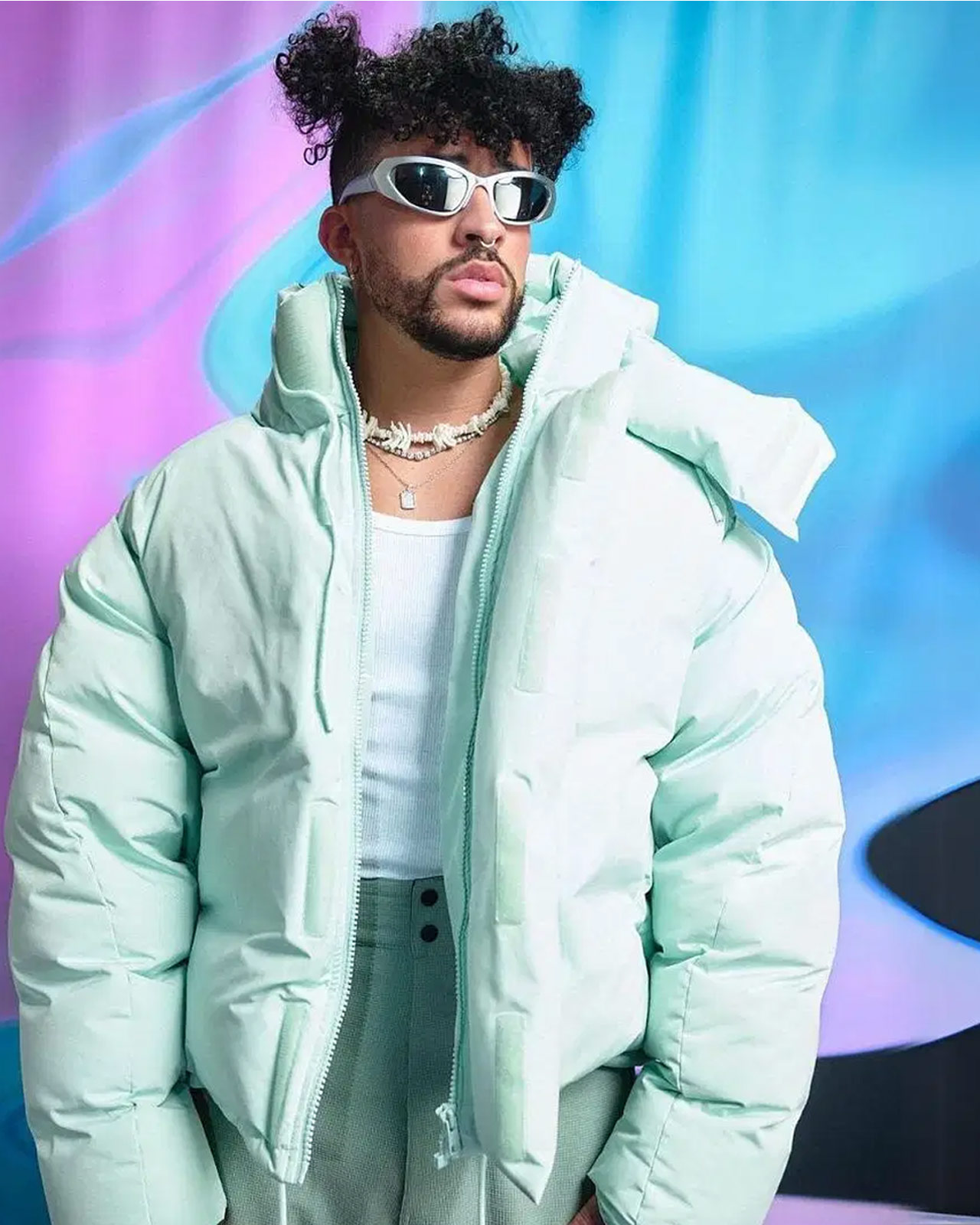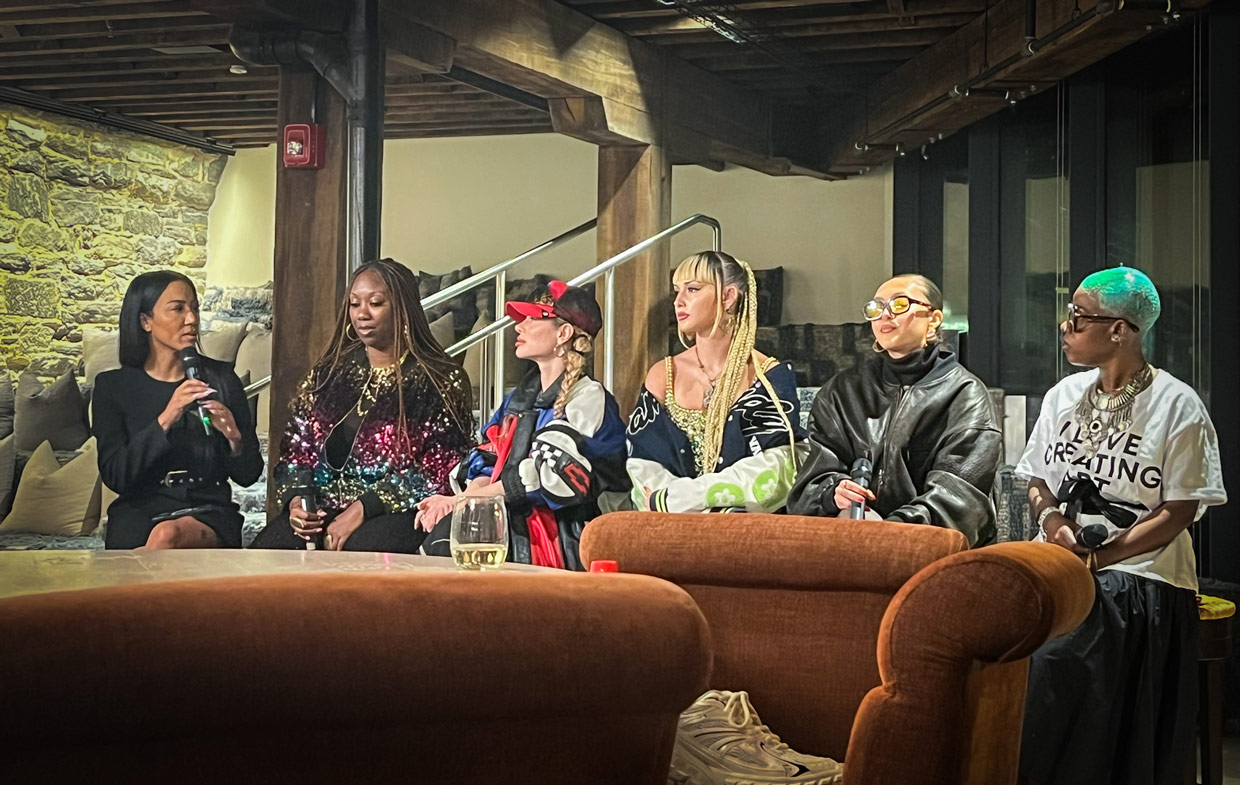Earlier this week I had the chance to attend the latest Play Talk by Groovevault, hosted at DUMBO’s creative hub at Soho Works (lucky and lazy me, that’s where my office is). The topic hit right home: How music and artists shape fashion trends. As stylists Chelsea Volpe, Karlita Sutela, and Syeidah McBride, alongside singer Annalise, shared their insights under Lati Chao’s moderation, I couldn’t help but think that this broad cultural phenomenon had been instrumental in the creation of VANQUISH Music.
The conversation gravitated toward iconic moments: Run-DMC’s groundbreaking partnership with Adidas, Tommy Hilfiger’s synergy with Aaliyah, and more recently, Kendrick Lamar’s masterful Celine-clad Super Bowl performance. As someone working at the intersection of music, sports, and culture, I’ve witnessed this play out in the Latin world first hand.
Fifteen years ago, music and sports occupied distinct territories in the fashion landscape. Sports had its established domain with the likes of Nike, Adidas, and Puma, while music aligned with brands like Diesel, Levi’s, or Gibson Guitars. Today, those boundaries have dissolved entirely. Take reggaeton’s rise, for instance. What began as a regional niche genre has evolved into a global cultural force, bringing with it an entirely new fashion aesthetic. J Balvin, once a local Colombian artist, sits front row at Chanel and Louis Vuitton shows, serves as an ambassador for New York Fashion Week, and collaborates with Guess on collections that blur the lines between streetwear and haute couture.
Perhaps more fascinating is how Latin urban music has become the bridge between athletic and artistic expression. When Puma signs both Dua Lipa and Neymar as brand ambassadors, or when Balenciaga and Dior launch sneaker lines that dominate both stadium tunnels and music video shoots, or Karol G collaborates with Barça, we’re witnessing more than just marketing strategy – we’re seeing the emergence of a new cultural language.
The panel touched upon an interesting observation: if the ’90s were characterized by grunge’s deliberate dishevelment – torn jeans and weathered t-shirts reflecting a generation’s disillusionment – today’s urban music scene celebrates luxury and abundance. This shift isn’t merely aesthetic; it’s a reflection of how music has evolved from cultural commentator to cultural architect. What makes this particularly intriguing in the Latin music space is how it has transformed from being a market segment to becoming a global tastemaker. Bad Bunny’s distinctive style doesn’t just influence Latin youth; it reshapes global fashion narratives. When he performs at the Grammy Awards wearing a traditional Puerto Rican head covering, or collaborates with Adidas on a reimagined sneaker design, he’s not just selling products – he’s exporting a cultural perspective.
At VANQUISH Music, straddling both the sports and music industries, we’ve had a privileged vantage point to observe this convergence. The symbiosis between soccer players and reggaeton artists has created a new category of cultural influence where athletic performance wear meets urban style, and where locker room fashion rivals music video wardrobes for social media attention.
Looking ahead, as one panelist cleverly noted, we’re entering an era where the partnership itself becomes the content. Social media hasn’t just changed how we consume fashion – it’s transformed how we create it. When Bad Bunny wears a dress to a red carpet event, or Rosalía collaborates with Nike on a flamenco-inspired sneaker, the conversation these choices generate often overshadows the products themselves. We used to say that the medium was the message, now we might as well comment that ‘the conversation is the product’.
This evolution suggests we’re moving beyond traditional notions of influence. It’s no longer about artists merely wearing brands or creating signature lines. Instead, we’re seeing the emergence of a fluid cultural exchange where music, sports, and fashion don’t just intersect – they actively shape each other’s trajectories.
As I left that evening, walking home past the Manhattan Bridge, looking at the city across the river, I couldn’t help but reflect on how far we’ve come from the days when Run-DMC first rapped about their Adidas. Today’s artists aren’t just wearing the culture – they’re creating it, one beat, one design, one cultural moment at a time.




